One miraculous energy source has garnered the attention of many nutrition experts and researchers over the past decade. No, it is not carbohydrates, fats, or even protein. We call them ketones or ketone bodies (more on the difference between the two later). To your body, however, ketones are nothing new.
In fact, your heart and renal cortex (the part of the kidney where ultrafiltration occurs) are using ketones as fuel right now. These cells prefer to use ketones instead of sugar.
After days of fasting or ketogenic dieting, ketone production increases and other cells like your muscle and brain cells start to use them for energy as well. This is the primary goal of the ketogenic diet, but why does it matter? Ketones are just another fuel source, right?
The Benefits of Using Ketones For Energy (Rather Than Sugar)
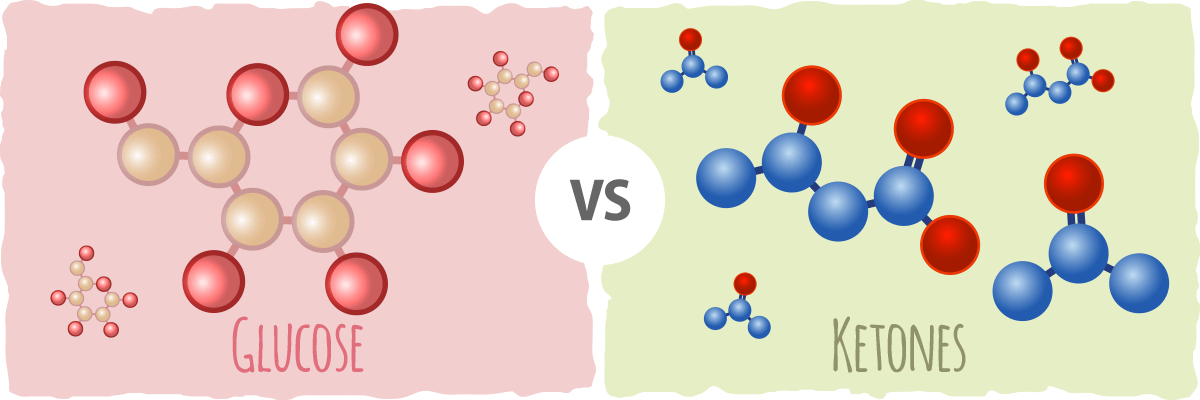
Glucose is the primary energy source for almost every cell in the body. This is because it can be broken down into energy much more quickly than any other fuel source, and it does this without the help of the mitochondria (the main energy producing component of the cell). Using glucose for fuel, however, comes with some negative effects.
What we gain in quickness, we lose in efficiency. During the process of sugar burning more free radicals and reactive oxygen species (harmful compounds that can cause cell damage) are released and less energy is created than when we use ketones and fat for fuel.
Ketones are a more efficient fuel source that inhibits the production of free radicals and reactive oxygen species. This leads to a host of benefits, especially for the brain cells that use ketones instead of sugar for fuel. For example, studies done on people with different types of cognitive issues from Parkinson’s disease to epilepsy confirm that using ketones as fuel can improve brain function tremendously.
However, the benefits of burning ketones for energy doesn’t stop in the brain. Many other cells like muscle cells also benefit from the use of ketones (more on that later), but you can’t reap these benefits unless you use up your sugar reserves first.
The Path to Ketosis
The use of ketones as a dominant fuel source — a process known as ketosis — occurs when the body doesn’t have sufficient glucose. This happens when the body uses up all of its glycogen (sugar stores) and it isn’t getting enough carbohydrates from the diet.
However, before we start burning more ketones, the body to relies on gluconeogenesis — the process of turning non-sugar compounds, like amino acids, into sugar. It is a living saving process, but it is also highly inefficient and causes some muscles loss.
Luckily, amino acids are only used as a dominant fuel source during the first two to three days of carbohydrate restriction because your body wants to preserve energy and muscle mass (just like you). To take the place of protein, the body uses a more efficient fuel source that preserves muscle mass — ketones.
What Are Ketones Exactly?
A google search for ketones will yield some results that refer to ketone bodies. In many cases, ketones and ketone bodies are used interchangeably, but they are not exactly the same thing.
Technically, ketones are organic compounds that contain a carbonyl group (a carbon atom double bonded to an oxygen atom) that is single bonded to two hydrocarbon groups made by oxidizing secondary alcohols. Did that organic chemistry go over your head?
Let’s look at an example of a ketone to help you understand it more clearly:
This is acetone — the simplest ketone. During the first couple weeks on the ketogenic diet, the body may make some of it and release it in the breath. This is why you may have bad breath during your first couple weeks on the ketogenic diet.
When you look at the picture of acetone, you will see a carbonyl group bonded to two hydrocarbon groups. The carbonyl group is the big “C” or carbon atom that is double bonded (marked by the double straight lines) to a big “O” or oxygen. That carbon atom is also single bonded (marked by single lines) to two hydrocarbon groups.
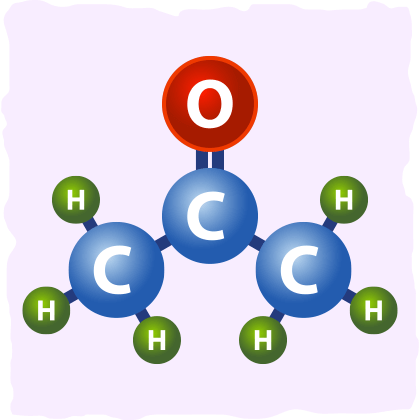
A hydrocarbon group is any compound consisting entirely of hydrogen and carbon. In our acetone molecule, you will find two hydrocarbon groups that are each called a methyl group. Each methyl group contains one carbon atom single bonded to three hydrogen molecules.
Is the organic chemistry still too complicated? Well, the good news is that it isn’t absolutely necessary to understand. All you really have to know is that acetone is simultaneously a ketone and a ketone body, while diacetyl — another naturally-occurring ketone that was a popular artificial butter-flavoring for popcorn — is just a ketone. You may also want to know why this is the case.
Will The Real Ketone Body Please Stand Up?
All ketone bodies are ketones, but not all ketones are ketone bodies. It’s not a riddle, it’s the truth.
There are millions of potential ketone compounds that can be formed with different combinations of different hydrocarbon groups, but not all of them are considered to be ketone bodies. When studies and articles talk about ketone bodies, they are referring to the three ketones that the body forms naturally. Other ketones like diacetyl (the ketone we mentioned before) are not produced by the body, so they don’t fall under the category of “ketone bodies”.
Here are the ketones that are also ketone bodies:
- Acetoacetate
- Beta-hydroxybutyrate (BHB)
- Acetone
These three are the only ketones that are produced in the body. They are all produced by the liver and used as an energy source when glucose is not readily available, but they are all produced at different times in slightly different ways.
How Ketone Bodies Are Formed
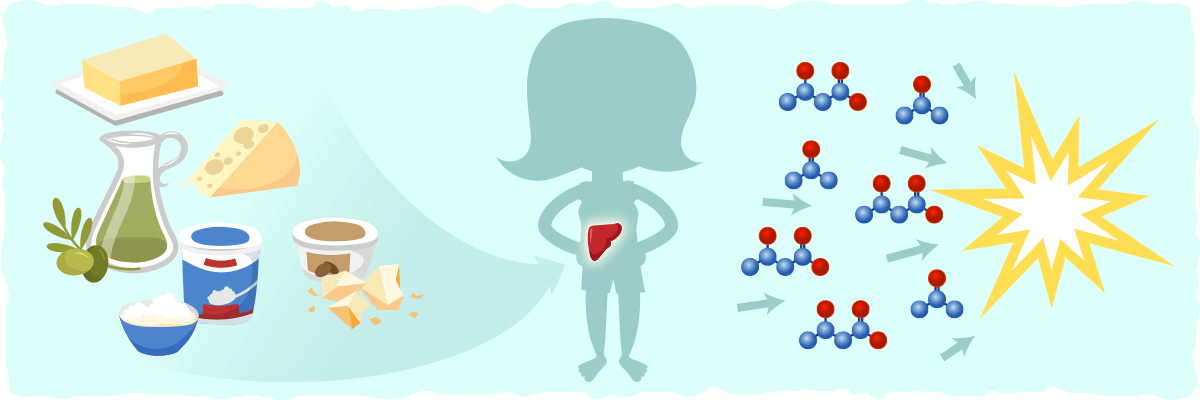
When glucose is not readily available, fat is broken down by the liver into glycerol and fatty acid molecules. The fatty acid is then broken down further, in a process called ketogenesis. During this process, acetoacetate is the first ketone body that is produced.
Acetoacetate is then converted into either BHB or acetone. Acetone is the least abundant ketone body, but it may be produced in higher quantities when you first start the ketogenic diet.
As your cells adapt to carbohydrate restriction, BHB becomes the most prevalent ketone body and your brain and muscle cells start using it as their primary fuel. In fact, when you are keto-adapted, ketones can supply up to 50% of your basal energy requirements and 70% of your brain’s energy needs.
But this is just a metabolic by-product of fat we are talking about here. How can it possibly become your brain’s primary fuel source?
Acetyl-CoA and The Citric Acid Cycle
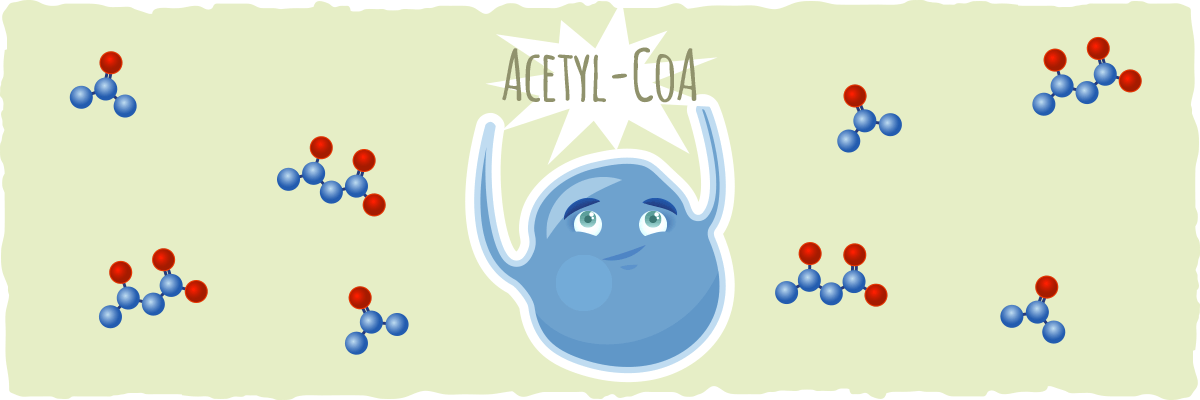
Acetoacetate and BHB would not be fuel sources if it wasn’t for the citric acid cycle that occurs in the mitochondria of aerobic cells. This cycle is a metabolic process that most of the cells in the body use to harness high-energy electrons from a carbon compound called acetyl-CoA.
Acetyl-CoA? where does that come from? Carbohydrates, proteins, fats, and ketones.
In fact, the main reason why the liver forms acetoacetate and BHB is because it can be broken down into two acetyl-CoA molecules in the cell that needs energy. Once they are inside the cell, the two acetyl-CoA molecules enter the citric acid cycle, their high-energy electrons are transferred to NAD and FAD molecules, and they become carbon dioxide.
The NAD and FAD molecules will then bond with the electrons to form NADH and FADH2. In other words, these NADH and FADH2 molecules act as a temporary storage molecule for the high-energy electrons that we got from breaking down the acetyl-CoA molecules.
What’s the purpose of doing all of this? To create ATP (the most common compound that the body uses to store and release energy).
In order to create the ATP, however, the electrons taken from the acetyl-CoA during the citric acid cycle must go through another process called oxidative phosphorylation. During oxidative phosphorylation, the electrons from NADH and FADH2 are transferred to an oxygen molecule so that ATP can finally be formed. That, my friends, is one of the processes that our body goes through to make energy.
One important thing to keep in mind is that the amount of energy formed during these two processes (the citric acid cycle and oxidative phosphorylation) depends on the energy source that is used. For example, BHB generates 3 more ATP molecules than acetoacetate because it undergoes a unique reaction that provides the cell with an extra NADH molecule.
In general, the citric acid cycle, in conjunction with oxidative phosphorylation, provides greater than 95% of energy used by aerobic cells like the heart, muscle, brain, and kidney cells. However, this does not include red blood cells and liver cells, which cannot burn ketones for fuel.
The Body Cannot Survive on Ketones Alone
In order for a cell to use the citric acid cycle and oxidative phosphorylation for energy production, it needs to have mitochondria and a variety of specific enzymes. Every cell in the body, however, does not have both.
Red blood cells, for example, have no mitochondria and liver cells lack an enzyme called CoA transferase. This makes it so that these cells have to depend on glucose for their energy supply. However, this does not mean that we must eat carbohydrates for our liver and red blood cells to survive. The liver has another way of making sugar.
Ketogenesis and Gluconeogenesis Work Together
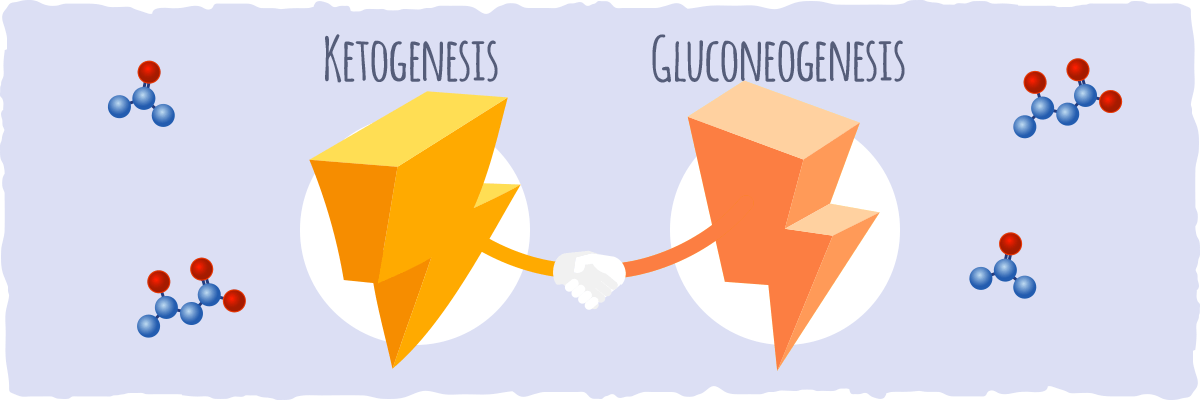
Remember the glycerol we mentioned earlier that was created from the breakdown of fat? It doesn’t go to waste.
While the fatty acid from the fat is being converted into ketones, the glycerol is converted into glucose during gluconeogenesis. This is a normal metabolic process that creates glucose from the amino acids in protein, lactate from the muscles, and the glycerol from fatty acids.
During fasting or carbohydrate restriction, gluconeogenesis kicks in to keep blood sugar at healthy levels and provide energy for the liver and red blood cells, while ketogenesis (burning ketones for fuel) is used to provide energy for the brain, heart, kidney, muscle, and other aerobic cells.
The relationship between ketogenesis and gluconeogenesis is essential for ketogenic dieters to understand, but why?
Because if you don’t eat enough protein, your muscle tissues will be used to make the glucose that your body needs. On the flip side, if you eat too much protein, your body will never get into a deep ketosis.
However, even if you get all of your macronutrient ratios right, your body won’t increase its ketone production immediately. In fact, it takes up to three days for your body to get into ketosis (without the help of exogenous ketones).
Exogenous Ketones — What Are They? Are They Worth it?
Throughout this article, we have been talking about endogenous ketones or ketones that are made inside the body. However, it is also possible to ingest exogenous ketones to get your body into ketosis without having to wait for your liver to produce ketones.
The only true exogenous ketones on the market right now are naturally derived ketone salts that combine acetoacetate or BHB with sodium, potassium, and/or calcium. KetoForce, KetoCaNa and Keto OS are the most popular ketone salts on the market, but do they work?
The research on ketone salts is sparse, but they do seem to raise ketone levels. In studies done on fasting subjects, a ketone salt of sodium acetoacetate was administered through an IV. It induced a 47%–92% increase in total ketone levels. However, the endogenous production of ketones dropped to 67%–90% of normal fasting levels.
What does this mean for you?
Ingesting ketone salts will probably increase your ketone levels, but it may not be good for long term ketogenic dieters. This is because ingesting ketones causes ketone levels to rise, triggering the liver to shut down ketone production. In other words, taking ketone supplements will keep your body from producing its own ketones.
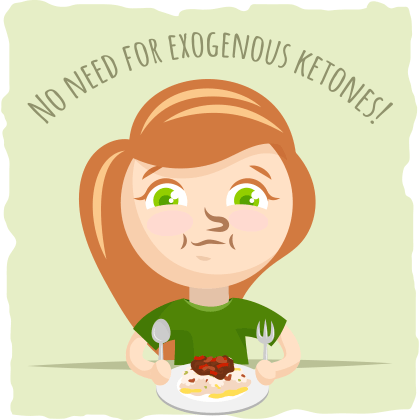
If your goal is to get into long-term ketosis then exogenous ketones are not the best choice. However, there is another supplement that can help boost endogenous ketone production – MCTs. With the help of this supplement, your liver will naturally start burning more ketones for fuel right away (and for much cheaper than exogenous ketones would cost).
How to Boost Ketones Without Side effects
Although they aren’t ketones themselves, medium chain triglycerides (MCTs) can be broken down into ketone bodies in the liver whether the body is in ketosis or not.
MCTs are a saturated fat that is unlike any other saturated fat. Most of the saturated fats we consume have to travel through the lymph to the heart and muscles, leaving your liver with leftovers that might be converted into ketones.
MCTs, however, skip the normal pathway of fat digestion and go straight to the liver where they can be converted into ketone bodies right away. This happens regardless if you are on a high-carbohydrate diet or a ketogenic diet — amazing!
These ketone boosting fats are naturally found in coconuts, coconut milk, and coconut oil, but the most effective way to consume MCTs is by taking an MCT oil supplement.

The best MCT oil to take is one that exclusively contains a medium chain triglyceride that is called caprylic acid (the C-8 medium chain triglyceride). Caprylic acid is known to digest more quickly and easily into ketones than the other types of medium chain triglycerides.
However, if you can’t afford the higher price tag of caprylic acid, any other MCT oil will help. I personally put a tablespoon or two of KetoMCT oil or Now Sports MCT oil in my protein shakes, salad dressings, and sauces, and find that it always boosts my energy levels and my feeling of fullness.
Proper dosing of MCT oil is essential. Take too much too soon, and you will probably experience digestive issues. This is why it is important to find a dosage that increases your energy levels without any side effects. From there, you can either stick with that dosage or increase it slowly.
An important caveat is that these MCT oil supplements may not be helpful for diabetics. Studies on rats have shown that MCT oil supplementation can be detrimental to the health of rats that have issues with blood sugar regulation. These findings may indicate that MCT oil supplementation can increase the likelihood of ketoacidosis in humans with diabetes.
Ketoacidosis — The Bad Side of Ketosis

Elevating blood ketones is not a good idea for everyone. When insulin isn’t available or not working correctly, ketone levels can increase dramatically and continue rising to unhealthy levels. This is commonly called diabetic ketoacidosis. “Diabetic” because this happens in people with type 1 and type 2 diabetes, and “ketoacidosis” because the excessive amount of ketones causes the blood to become too acidic.
This shift in blood acidity can be fatal, but it can easily be mitigated. The most common symptoms are thirst, frequent urination, nausea, abdominal pain, weakness, fruity-scented breath, and confusion. If you have these symptoms, drink plenty of water and they may subside. Consult with your doctor if symptoms don’t get any better.
However, diabetic ketoacidosis may be preventable. By following a ketogenic diet both type 1 and type 2 diabetics will be less likely to have issues with blood sugar and ketone levels, and more likely to experience the benefits of ketosis (as long as they keep their insulin levels in check).
But what about people who don’t have diabetes?
It is highly unlikely for healthy individuals to experience ketoacidosis. A healthy body creates plenty of insulin and its cells respond appropriately to that insulin. This allows the liver to produce ketones at the right time and shut off ketone production before too many ketone bodies get released into the blood.
The Good Side of Ketones — Comprehensive Health Benefits
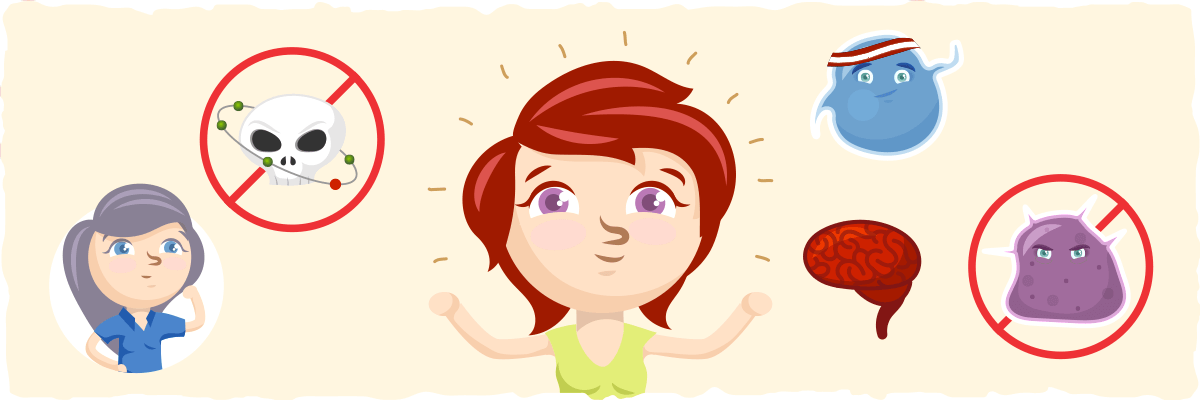
In the coming decade, there will be much more research on ketones, but here is a short list of benefits that are backed of by science so far:
1. Ketones Stimulate Mitochondrial Production
New mitochondria are formed in cells after they begin burning exclusively ketones for fuel. This has been found to occur in the brain cells of people who are on the ketogenic diet.
Why does this matter? Because more mitochondria leads to more energy and healthier cells.
2. Ketosis Protects and Regenerates The Nervous System
Many studies have found that ketones help preserve the function of aging nerve cells and aid in the regeneration of a damaged and malfunctioning nervous system. For example, one study found that ketones helped patients with acute brain injury improve significantly.
3. Ketones Act Like an Antioxidant
Burning ketones for fuel reduces the number of reactive oxygen species and free radicals that are produced. This helps protect the body from the damage and disease that reactive oxygen species and free radicals can cause.
4. Ketones Preserve Muscle Mass
When you lose muscle mass you lose years off of your life. This is an unpleasant side effect of aging, however, a ketogenic diet may be the remedy.
Many studies have found that ketones have a muscle preserving effect. This effect was especially prevalent in people who were restricting calories to lose weight. Not only does this make the ketogenic diet and ketones a great fat loss tool, but a longevity enhancer as well.
5. Ketones Help Prevent Cancer Growth
Research shows that ketones can help fight cancer. This is because cancer cells cannot use ketones as fuel. Without fuel, the cancer cells have no energy for growth, and the immune system can help eliminate them from the body.
6. Ketones May Improve The Quality of Life for People With Autism
Studies on mice that exhibited similar behaviors as humans with autism provide us with promising results. In these studies, researchers found that the ketogenic diet can improve and even reverse autism-like behaviors in mice.
These positive results were probably caused by two factors. The first factor is that brain cells function more efficiently when they use ketones for fuel rather than sugar. Secondly, ketones can have an inhibitory effect on nerve cells. What happens when you make a hyper-excitable nervous system more efficient and less active? Less autism-like behaviors.
There you have it — the six benefits of ketones that are backed by science. Keep in mind, however, that we are still just beginning to understand the effects that ketones have on the body, so this list is far from complete.
You can find more health benefits (along with more in-depth information) in our full Guide to Keto >
The Takeaway
As long as you maintain healthy insulin levels and eat a ketogenic diet with the right macronutrient ratios, you will get into ketosis and experience the many benefits of ketones without any side effects.
If you need a quick ketone boost, try supplementing with MCT oil. This saturated fat will make it easier for your body to make ketones and adapt to the ketogenic diet.
However, don’t forget about gluconeogenesis. Without the right protein and fat intake, your body will continue to use gluconeogenesis for fuel instead of shifting into ketosis. To find out more about gluconeogenesis and how to mitigate its negative effects, check out our recent article on the topic.
Sources:
- Inhibition of ketogenesis by ketone bodies in fasting humans — Science Direct
- Ketone bodies, potential therapeutic uses. — NCBI
- Ketone bodies: a review of physiology, pathophysiology and application of monitoring to diabetes. — NCBI
- Clinical review: Ketones and brain injury — NCBI
- KETONES INHIBIT MITOCHONDRIAL PRODUCTION OF REACTIVE OXYGEN SPECIES PRODUCTION FOLLOWING GLUTAMATE EXCITOTOXICITY BY INCREASING NADH OXIDATION — NCBI
- Ketone supplementation decreases tumor cell viability and prolongs survival of mice with metastatic cancer — NCBI
- Very-low-carbohydrate diets and preservation of muscle mass — NCBI
- Ketogenic diet improves behaviors in a maternal immune activation model of autism spectrum disorder — NCBI
- Potential Therapeutic Use of the Ketogenic Diet in Autism Spectrum Disorders — NCBI
- The Citric Acid Cycle — NCBI
- Oxidative Phosphorylation — NCBI
- The fat-fueled brain: unnatural or advantageous? — Scientific American
- Experimental hyperosmolar diabetic syndrome. Ketogenic response to medium-chain triglycerides. — Pub Facts
- Diabetic Ketoacidosis — Medscape
- Can a Ketogenic Diet Help Fight Cancer? — Authority Nutrition
- MCT Oil 101 – A Review of Medium-Chain Triglycerides — Authority Nutrition
- The Properties of Lauric Acid and Their Significance in Coconut Oil — Springer Link
- Effects of medium-chain triglycerides on weight loss and body composition: a meta-analysis of randomized controlled trials. — NCBI
- Ketosis vs. Ketoacidosis: What You Should Know — Healthline
- Muscle Mass Index as a Predictor of Longevity in Older-Adults — NCBI